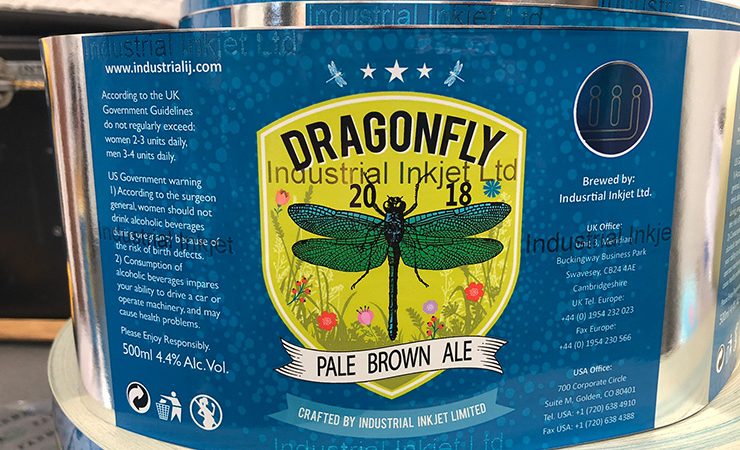John Corrall, managing director at Industrial Inkjet, says that striving for the highest possible DPI may not be the optimum choice for some packaging applications.
With the seemingly relentless pace of new printheads and associated technology, we shouldn’t lose sight of the fact that fundamentally any solution will always come down to the same calculations: total cost of ownership (TCO) and return on investment (ROI). Each provider will need to work out how they address this, but the cost of hardware is only part of the issue. Continuous downward pressure on ink price will eventually force a jump to water-based inks, even if ‘going green’ doesn’t force the issue first.
In the early adoption of inkjet for labels and carton printing, 600dpi Kyocera printheads dominated the market due to their resolution and width. Their preference for low viscosity ink was a challenge for UV ink suppliers, but this was overcome.
Recent trends in carton printing have seen the Fuji Samba 1200dpi printhead adopted widely, with some companies evaluating the Xaar 5601. This shows the market’s desire for higher resolution printheads and better head-to-head stitching methods. Similarly Durst, Gallus and others have adopted Samba for label printing, utilising the comparatively narrow printbar footprint and high resolution to allow expanded colour sets. However, the sheer cost of these systems, and issues related to head life, UV ink compatibility, maintenance complications and print distance have a dampening effect.
Print quality
The big issue is always print quality. What does each market segment actually need versus what customers demand.
If you look at the EFI Nozomi or the Barberan offering for packaging, these are lower resolution solutions but are more robust and with significantly lower cost.
The pressure on printhead manufacturers is always towards smaller drops and higher resolution but its quite possible to go too far. The wide format market is a good example. Most wide format manufacturers have settled on a drop size of around 10pl as the best balance between print quality and the need for a long ink throw distance onto what is unlikely to be perfectly flat media. There is a strong argument that for most corrugated production, 600dpi may be too high especially if trying to utilise a small drop size. This is where the 400dpi Fuji Starfire looks strong. We expect other manufacturers, including Konica Minolta, to aim at this gap. There is also evidence from the textile market that printing multiple smaller drops at a lower actual resolution can give a more robust solution in single-pass printing, and this could be replicated in many packaging applications.
For flexible packaging the drive is very much for low cost thin ink layers that are suitable for food packaging. Typically these are wide systems of around 800-1600mm width. The customer’s quality demands are also high. Materials are easily controlled so ink throw distances can be short. All of this points to small drops sizes – therefore high resolutions – and water-based inks. With the early machines being 600dpi, there are already R&D activities aimed towards 1200dpi. The economics in this market can handle the higher machine costs, provided cost-per-print is low.
The label market is heading in a similar direction. Another niche within the label printing market is retrofitting/upgrading of an existing flexo press by adding an inkjet module. Hybrid printing is a fairly well-established market now. However there are a vast number of perfectly sound flexo presses in the world that are much too good to scrap. By adding a colour inkjet module to the existing press, the old press is suddenly economically viable again.
The ‘surgery’ to add inkjet should consist of drilling four mounting holes or adding a couple of clamps. If the inkjet module is very compact then the effect of any web wander on colour-to-colour alignment is minimised. Similarly any change in web tension and therefore stretch has minimal effect.
At IIJ, we have identified the KM1800i printheads as best suited for this. By packing the heads as close together as possible, we can achieve a distance from first colour to last colour of less than 150mm. This compares with perhaps 10 times that distance for a typical standalone inkjet press. Most of the interest in KM1800i heads and modules is currently for UV inks, but at IIJ we have been testing water-based inks for these heads for both flexible packaging and white carton.
This article was published in the September/October edition of Digital Labels & Packaging, which you can read in full here






